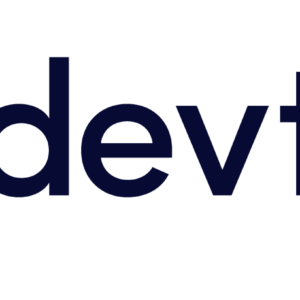“Scaling Agile” is a relatively new concept that many organizations are considering, and some have attempted. They quickly find, however, it’s not as simple as forcing more teams to have a standup every morning or use a Kanban board. There are fundamental changes required to process, culture, and even organizational definitions of success, all of which present challenges at different stages of the Agile journey.
In this two-part series of whitepapers, we’re going to dive deep into how organizations can scale Agile most effectively. It requires both a bottom-up and a top-down approach, the former starting at the individual team level and the latter starting with the C-suite.
We cover:
1.) The foundation you’re building on
2.) Key concepts to guide your build
3.) A blueprint for success
The database you choose plays a key role in building successful mobile apps. If your app requires a connection to work, performance will be sluggish and spotty – and your customers will find a better experience elsewhere.
Use this whitepaper to select the best mobile database for your needs based on 9 critical questions, including:
In this report, Forrester states that, “NoSQL has become critical for all businesses to support modern business applications,” and that, “enterprises like NoSQL’s ability to scale out using low-cost servers and a flexible, schema-less model that can store, process, and access any type of business data.”
Using a 26-criterion evaluation, Forrester identified the 15 most significant NoSQL providers and researched, analyzed, and scored them. This report shows how each provider measures up, and helps enterprise architecture professionals select the right one for their needs. You’ll learn how top NoSQL providers are rapidly innovating.
This guidebook aims to outline how security teams can transform pentesting from a development blocker into a value-adding program that provides periodic feedback.
It explores the following:
This report reviews the major cloud data pipeline services from the big three providers and look at each one’s commonalities and unique capabilities. We examine: Azure Data Factory, AWS Glue,AWS Data Pipeline, GCP Dataflow and GCP Cloud Data Fusion.
The report also explores and discusses how far the services’ out-of-the-box functionality will take you, and how to extend that functionality where necessary, with data source connectivity as a specific axis of extensibility.
We also enumerate basic differences between cloud and on-premises data pipelines and discuss how extensibility frameworks can help in both cases.
See how over 500 organizations run their incident management process.
Each company has its own version of an incident management process, and some are clearly better than others. Learn how world-class IT Operations and DevOps teams resolve incidents and see how your own internal process compares.
For as long as people have created and run software, the two sides—build and operations—have worked at cross-purposes. Developers want to go fast and deliver more frequently, while operations teams need to ensure the releases are secure, adhere to governance policies, and are available.
DevOps attempts to bridge those worlds, by empowering developers with more self-service capability; but this creates islands of ad hoc infrastructure creation that IT must deal with. Throughout a continuous software delivery lifecycle the infrastructure is fluid, and can change at each step, demanding it is understood, tracked, enabled, and managed safely and seamlessly by all DevOps team members—from agile planning through to production and back.
Join David Williams of Quali in a discussion on how organizations can find commonality between the build and run efforts, and how automation technology can help.

Application security traditionally happened after development was finished, something to be bolted on for protection. In traditional top down implementations, developers weren’t a part of security and didn’t give it much consideration beyond some testing. Today, security is top of mind in most organizations, which have come to realize that application security starts with the application, at the code level. But developers haven’t been trained in using security tools, and reluctantly do it because it has been mandated from management.
So, how do you get developers involved with security? One way is by making security tools more developer-centric, so those software engineers can make a change in their pipeline and simultaneously ensure that change doesn’t open a vulnerability.
Join Veracode Solution Architects, Juan Mazo and Chris Campbell for a lively, half-hour discussion of the importance of the role developers can and must play in securing applications, and how to get them to go along for the ride.

Through live demonstrations and detailed examples, this webinar shows architects and application developers how to achieve the benefits of NoSQL without denormalizing their data. You’ll learn how to migrate a table-based data model to JSON documents, tweak your SQL for querying JSON data, and create indexes to support fast query performance.
We show you – with live demos – how to:
• Use SQL for JSON to query your data and create joins
• Optimize indexes and perform HashMap queries
• Leverage NoSQL in applications and for analysis

AVAILABLE NOW Agile engineering teams need to focus on delivering high quality code at pace. However, ensuring releases don’t negatively impact search engine optimization (SEO) often sits way down the priority list.
But what if you could rapidly automate SEO tests as part of the QA process, fully integrate them into the CI / CD system, and automatically raise JIRA tickets when bugs are found?
Join us for this webinar where Cosmin Elefterescu, Head of Product Management at DeepCrawl, and James Leisy, Senior Technical SEO at DeepCrawl explore the future of SEO QA and discuss why it’s vital for your business.

AVAILABLE NOW The pace of innovation is accelerating. Yet continuous WFH diminishes software teams’ output. What can you do to increase individual – and team – performance, without burning out?
Join guest speaker Nils Vesk and Devtech Group for a live session that unpacks the 14 most common mistakes affecting your team’s performance. Nils also explains how to flip these mistakes into principles that will deliver innovative, cohesive teams for years to come.
Nils works around the world with innovative teams just like yours. His clients include IBM, Microsoft, HP, Canon, Fuji Xero, and Gartner. Devtech Group provide custom software development for ISVs like Mimecast, Acronis, and Appriver.
Mistakes Nils discusses include:
• Thinking that to create behavior change you need to change motivation first
• Insufficiently distinguishing between people vs. process issues
• Measuring outcomes, but not measuring behaviors or having process goals
• Failing to use stories to drive behavioral change
• Allowing assumptions to take over from fact – in team dynamics, execution, and problem-solving
Go from feeling overworked and overwhelmed to feeling confident and strategic. Experience an increase team capacity without being a taskmaster.

Security departments used to have the primary responsibility to ensure these goals, but as the pace of development has increased, organizations have shifted security left, making it difficult for security to scale. This has caused a necessary shift of some of this responsibility to developers, but they are also under pressure to deliver features, and are not always well equipped to make appropriate AppSec decisions.
Since security responsibilities are being put on them, developers should embrace an active role in the process, and should have a voice setting the critical requirements for security solutions. They should demand that policies, processes and especially training that take their needs into account are instituted. Organizations that provide coaching and training to their developers see a threefold improvement in security finding remediation. Through cross-training, security experts should train developers on best practices, and developers should train security on the demands of the development life cycle.
Join Cody Bertram and Patrick McNeil, both Senior Principal Solution Architects at security company Veracode, for an important discussion on enabling developers to take a more active role in application security.

